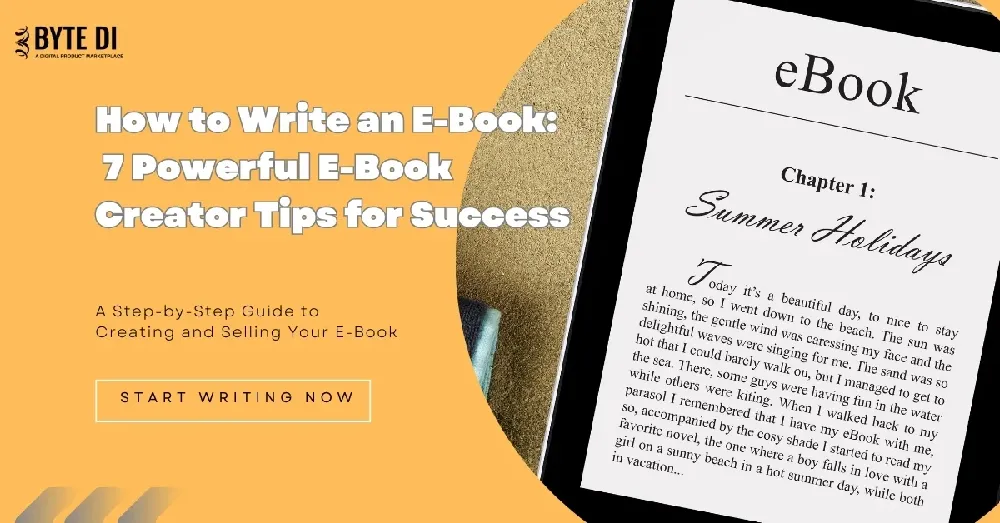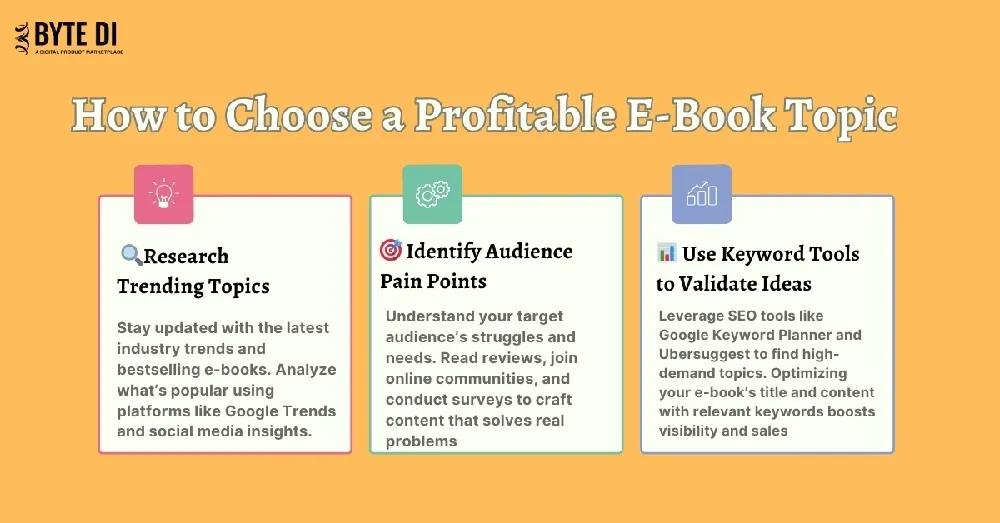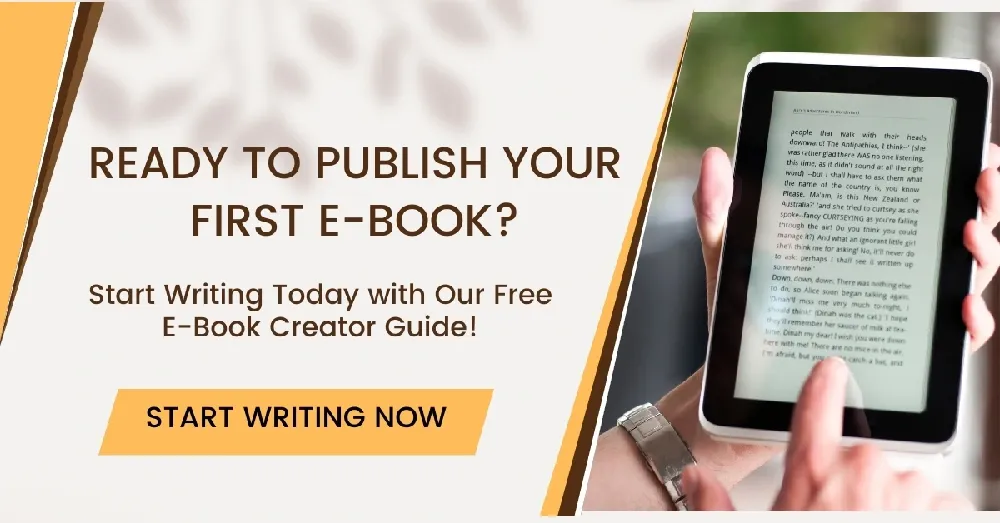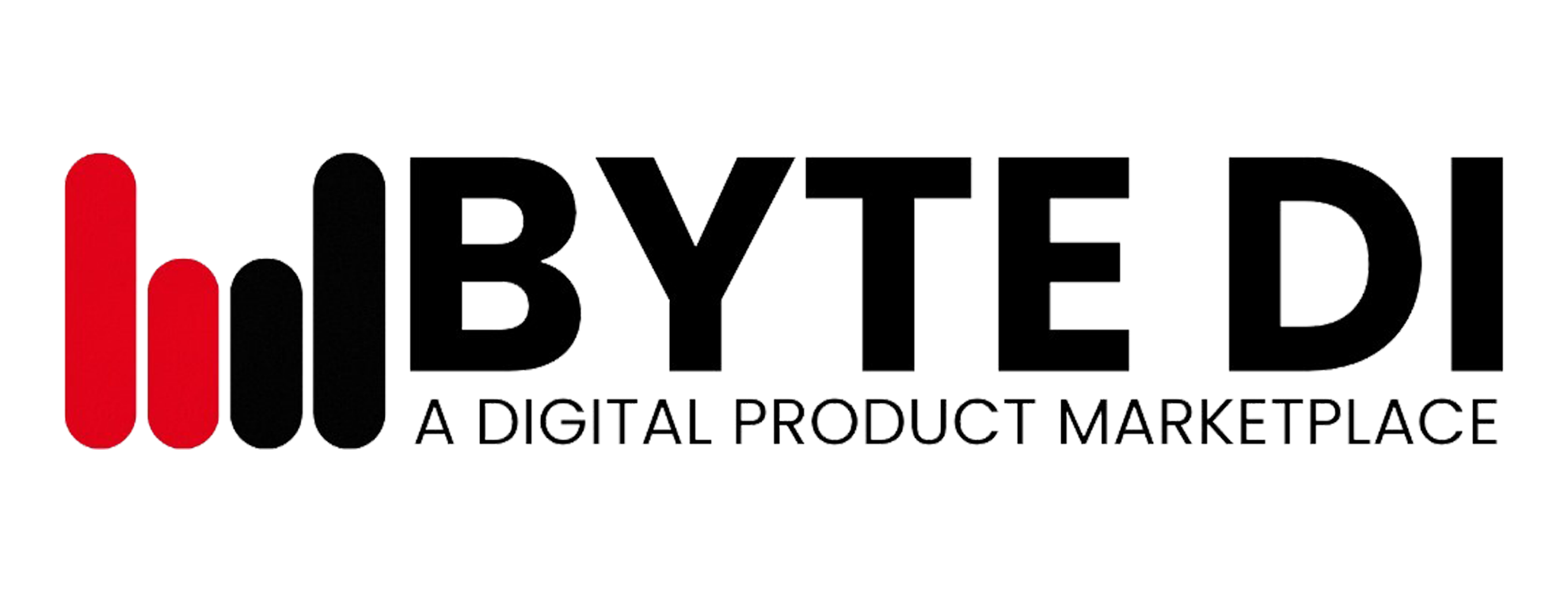How to Write an E-Book: 7 Powerful E-Book Creator Tips for Success

Modern technology through e-books transformed how both knowledge acquisition and its distribution function. Digital book development enables every business owner blogger and author to access worldwide audiences and create authority while potentially earning passive income through well-structured content delivery.
The good news? Everyone can develop such a product regardless of their professional qualifications in writing and design work. Any person with a proper strategy and online book creation resources can make a remarkable e-book which delivers high value to readers.
This guide presents 7 efficient methods which help you successfully compose write, design and distribute e-books.
1. Choose the Right Topic for Your E-Book

Your first step before composing your writing should be to pick a subject that offers high reader demand. Your book benefits from superior market appeal when you choose a relevant subject.
How to Find the Perfect Topic
- Use your expertise by discussing subject matters you feel confident about and love the most.
- You should analyze market demand through the combination of Google Trends with Amazon Kindle data and Quora audience insights.
- The solution of existing problems within written content makes books more marketable.
- Investigate existing e-books to detect unaddressed topics which you can fill with individual perspectives.
A digital marketer should focus their content on “Mastering Facebook Ads for Small Businesses” as an example.
🔹 Stat: According to Amazon KDP, non-fiction e-books that solve problems tend to sell 3X more than general interest books.
2. Create a Structured Outline Before Writing
A properly outlined document functions as a book blueprint. The outline enables both logical organization and maintains writing direction.
Step-by-Step Outline for Your E-Book
- Begin the book page with all vital information including the name of the book and author along with branding elements.
- The contents page functions as a guide to locate different sections of your material efficiently.
- The introduction provides explanations about your book's scope together with its targeted audience.
- Chapters & Subsections – Organize content into digestible sections.
- Conclusion & Key Takeaways – Summarize important points.
- Your readers need a Call-To-Action (CTA) to subscribe or purchase while they should also share your content.
💡 Pro Tip: Use bullet points and numbered lists to improve readability.
3. Write Engaging and Clear Content
Moving forward with your composition begins after building an outline. You should maintain engaging content that both provides clarity and carries value throughout the writing process.
Tips for Writing a High-Quality E-Book
- The writing should employ a conversational style which resembles a friendly conversation.
- Break Up Large Paragraphs – Use short paragraphs, bullet points, and subheadings.
- Using stories within your content allows readers to link with actual life illustrations.
- The content must contain valuable information throughout each sentence.
📌 Example: Instead of writing:
Professional advertising experts explain the core principles of digital advertising in great detail through this complete business improvement guide.
Write:
The guide provides all necessary information to enhance your business through digital advertising. This complete guide provides all necessary information step by step.
Research indicates that e-books with sentences thirty percent more successful for retaining readers when limited to 15–20 words per sentence.
Stay inspired! You can follow us on Instagram where we upload the new tips and updates.
4. Use the Best E-Book Creator Tools for Design & Formatting
A professional-looking e-book enhances credibility and improves the reading experience.
Best Tools for Formatting & Design
- Canva serves as a tool for designing attractive covers along with aesthetics for page layouts.
- Scrivener provides the best environment for creating organized structures and editing extensive projects.
- Adobe InDesign – Best for advanced formatting.
- The application Visme provides exceptional capabilities to enhance your book through interactive content.
📌 Formatting Best Practices:
✔ Use a clear font (Arial, Times New Roman, Open Sans).
✔ Keep font size readable (12-14 pt).
✔ Maintain consistent spacing and margins.
✔ Add high-quality images where necessary.
5. Edit & Proofread Your E-Book Thoroughly
The presence of mistakes will damage credibility through a loss of audience trust. After making sure your book has neither errors nor polish issues proceed with publishing.
Editing Checklist:
✔ Check Grammar & Spelling – Use Grammarly or Hemingway Editor.
✔ Read Aloud – Helps spot awkward sentences.
✔ Simplify Sentences – Remove unnecessary complexity.
✔ Verify Information – Fact-check statistics and claims.
🔹 Pro Tip: Hire a professional editor for a final review.
6. Choose the Right Format & Publishing Platform
The electronic version of your manuscript needs to appear on multiple device platforms including Kindle as well as iPads and smartphones.
Popular E-Book Formats:
📖 PDF – Best for direct downloads and email lead magnets.
📖 EPUB – Ideal for Kindle, Apple Books, and Google Play Books.
📖 MOBI – Used for Amazon Kindle readers.
💡 Convert Your E-Book Using: Calibre, Reedsy, or Zamzar.
7. Promote and Sell Your E-Book Successfully
A well-written book needs effective marketing to reach a wider audience.
Top Platforms to Sell Your E-Book:
✔ Amazon Kindle Direct Publishing (KDP) – The largest self-publishing platform.
✔ Gumroad – Perfect for selling directly to customers.
✔ Bytedi – Sell your e-books on our digital publishing platform.
✔ Your Own Website – Maximize profits without third-party commissions.
Marketing Strategies for Maximum Reach
📢 Use Social Media – Share quotes, insights, and teaser pages.
📢 Leverage Email Marketing – Send exclusive offers to your subscribers.
📢 SEO Optimization – Optimize blog content with high-ranking keywords.
📢 Run Paid Ads – Promote your e-book using Facebook & Google Ads.
🔹 Example: If your book is about personal finance, promote it in finance-related Facebook groups and LinkedIn communities.
Conclusion
The act of composing and releasing improved e-books serves as an effective method to establish yourself as an authority figure while simultaneously expanding your brand visibility and producing financial income. The combination of these seven professional techniques will help you make a book which successfully engages readers and achieves marketplace success.
💡 Bytedi makes it easy to publish and promote your e-books.
📢 Ready to turn your knowledge into income? Start creating your e-book today with Bytedi! 🚀

FAQs on How to Write an E-Book
1. How to write an e book if I have no prior writing experience?
The beginning writer should initiate their project with a thorough outline to organize their content. Create your writing by using plain language alongside brief paragraphs and narrative techniques that engage readers. The editing software Grammarly aids in improving the quality of your work.
2. What is the best format for an e book creator?
The standard outputs in ebook creators are PDF and EPUB together with MOBI file types. Users should choose PDF as their default download format yet EPUB and MOBI remain the best selection for Kindle e-readers.
3. How long should an e-book be?
The overall length of an ebook gets determined by its specific purpose. A how-to guide requires a word count between 5,000 to 15,000 yet thorough books exceed 30,000 words. The goal should be value delivery instead of reaching a specific word goal.
4. How to write an e book that attracts more readers?
Your article will grow its reader base by selecting topics that are currently popular or in high demand while writing informally and providing real-world guidance. Book creators allow users to improve both the visual appearance and reading experience.
5. Do I need an e book creator to publish my book?
Using an e book creator simplifies the process of formatting as well as cover design and file conversion. You can create e-books manually through Word along with Google Docs and Canva design software in addition to an e-book creator.
6. How can I monetize my e-book effectively?
You can sell your e-book through your website, online marketplaces, and email marketing. Offering free samples, running promotions, and using SEO can also boost sales.
7. How to write an e book that ranks well on search engines?
For better SEO, include relevant keywords naturally, write a compelling meta title and description, and structure your content with H1 and H2 tags. Using an e book creator can also help with proper formatting for better visibility.
